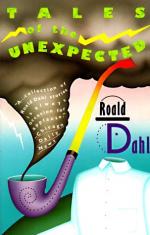|
This section contains 709 words (approx. 2 pages at 400 words per page) |

|
Point of View
The point of view in Dahl's stories varies greatly: sometimes it is in the first person, sometimes in the third. However, readers should note that when Dahl does use the first person, he does so in most cases from the point of view of an outsider - someone uninvolved in the main intrigue, such as in "Taste," "Man from the South," and "Neck." One exception to this is in "Nunc Dimiltis," in which Lionel narrates his own story (this is perhaps so that the first-hand account of being poisoned at the end carries more intensity). His third-person stories often use the close third person, or third person limited, in that they stay with the main character's point of view and rarely, if ever, stray. The cases where they do, such as when Landy's point of view appears in "William and Mary," are in themselves remarkable for...
|
This section contains 709 words (approx. 2 pages at 400 words per page) |

|




